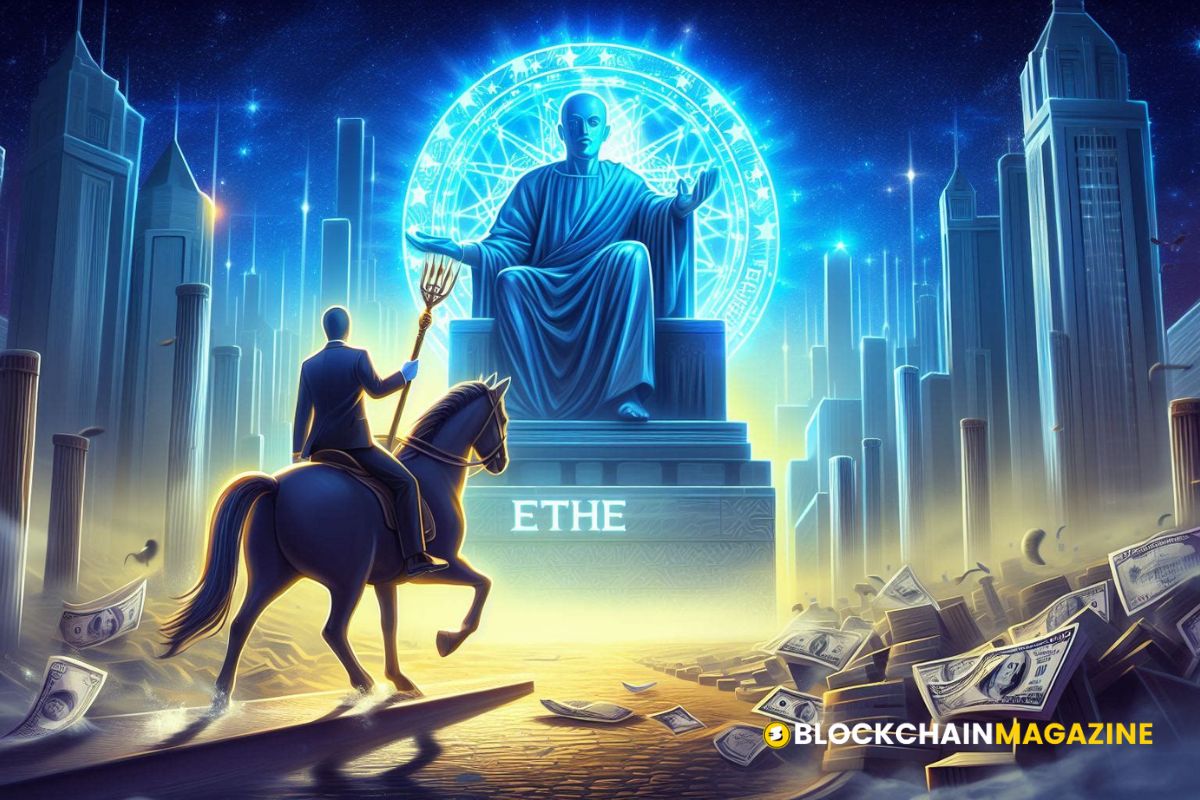Top 6 Depin Crypto Projects Innovating in Web 3
Hey there! So, you’ve probably heard a bit about Web 3.0 and how it’s changing the game, right? Well, there’s this cool thing called DePIN crypto that’s shaking up the scene even more. It’s all about decentralizing physical infrastructure networks. Sounds fancy, but it’s really just about making things like data storage and computing more open and accessible. In this piece, we’re diving into six standout projects that are leading the charge in this space. Let’s see what makes them tick!
Key Takeaways
- The Graph Protocol helps in accessing blockchain data quickly and easily.
- Theta Network is changing how we stream videos by decentralizing the process.
- Akash Network offers a cheaper way to use cloud computing without big companies.
- Arweave ensures your data stays safe and accessible forever.
- Filecoin lets anyone rent out their unused storage space, making data storage more open.
1. The Graph Protocol
The Graph Protocol is a decentralized indexing protocol designed for Web3 applications. It organizes blockchain data, making it easily accessible through GraphQL queries. This is a game-changer for developers who need quick access to blockchain data without the hassle of dealing with complex infrastructure.
How It Works
The Graph operates by creating an open market for indexed blockchain data. It tokenizes on-chain data, allowing participants to curate, index, and sell it in an on-chain marketplace using GRT, the native token of the Graph ecosystem. The indexed data sets are known as subgraphs, which users—whether individuals or decentralized applications—can purchase based on their needs.
Key Features
- Decentralization: By eliminating the need for centralized services like AWS, The Graph empowers developers to build truly decentralized applications.
- Efficiency: Subgraphs allow for efficient data retrieval, which is essential for the smooth operation of DApps.
- Community Driven: The protocol thrives on community involvement, with curators and indexers playing vital roles in maintaining the ecosystem.
Impact on Web3
The Graph is pivotal in the Web3 landscape, providing the necessary infrastructure to support the next generation of decentralized applications. By organizing data in a way that’s both accessible and scalable, it reduces the dependency on centralized systems and fosters innovation in the blockchain space.
“In a world where data is king, The Graph Protocol stands as a beacon of decentralization, paving the way for a more open and accessible internet.”
2. Theta Network
Theta Network is shaking up how we think about video streaming. At its core, Theta is a decentralized content delivery network (CDN) that taps into users’ spare bandwidth and computing power. This means that instead of relying on big, centralized CDN providers, Theta allows users to share their resources, making video streaming faster and more efficient.
Key Features of Theta Network:
- Sharing Bandwidth and Resources: Users can watch videos while sharing some of their bandwidth to help deliver content to others. This reduces load times and buffering.
- Rewards System: Those who provide bandwidth earn TFUEL, Theta’s operational token. It’s used for transactions related to video streaming and other network operations.
- Decentralized Blockchain: Transactions and services are recorded on the Theta blockchain, which uses the THETA token for governance, staking, and consensus.
Theta isn’t just about streaming anymore. Since its start in 2019, the network has expanded its reach. In April 2022, Theta launched the Metachain, a solution for running multiple chains in parallel, speeding up processing. And coming up in 2024, the Theta EdgeCloud will roll out, offering decentralized cloud computing for AI, 3D rendering, and gaming tasks.
“Theta Network is more than just a technology; it’s a community-driven effort to redefine digital content delivery.”
With partners like Sony, Samsung, and Google on board, Theta is not just a tech experiment—it’s a real-world solution. The Theta EdgeCloud initiative, set to enhance AI tools and optimize video rendering, marks a significant leap in merging AI with decentralized finance and robotics. This could be a game-changer for Web3 experiences.
3. Akash Network
Akash Network is a decentralized cloud computing platform that’s shaking up the way we think about cloud services. Instead of relying on big players like Microsoft Azure or Google Cloud, Akash uses a decentralized model where anyone with extra computing power can join in. This means that if you have a spare server or some unused computational resources, you can participate in Akash’s on-chain compute marketplace.
Key Features of Akash Network
- Akash Blockchain: Built on the Cosmos SDK, this blockchain hosts the Akash Marketplace. It handles compute services through smart contracts and supports governance, consensus, and staking.
- AKT Token: This token is vital for renting compute resources and is also used in staking and governance within the network.
- Cost-Effective: Akash offers a cheaper alternative to traditional cloud services, making it appealing for those looking to cut costs.
- Akash Supercloud: This is an upgrade aimed at improving GPU access by providing permissionless access to computing resources.
Akash Network represents a significant shift in how cloud computing can be accessed and utilized, offering a more democratic and cost-effective solution.
In 2025, Akash continues to expand its capabilities and partnerships, aligning with Roam’s Discovery Ecosystem to drive further innovation in the DePIN sector.
4. Arweave
Arweave is a unique player in the world of decentralized data storage. Instead of the usual temporary storage, it offers permanent and immutable storage solutions. This is a big deal because it means your data can live forever on the blockchain without the need for constant renewal and payment.
Key Features of Arweave
- Permanent Storage: Arweave has a sustainable endowment model that predicts the decreasing cost of storage over time, making it affordable to store data indefinitely.
- Arweave Blockchain: Secured by a decentralized network, it rewards miners with AR tokens for maintaining the network.
- Permaweb: A layer on top of the Arweave blockchain, it allows for the creation of decentralized applications (dApps) that can access Arweave’s full stack, including gateways and SmartWeave.
How Arweave Stands Out
Arweave’s approach to permanent storage is different from others like Filecoin. While Filecoin creates an open market for temporary storage, Arweave focuses on a one-time payment model for lifelong data storage. This makes it an attractive option for those looking to store important data without worrying about future costs.
Arweave’s vision is to create a truly permanent web, where information is stored forever, accessible to anyone, anywhere.
The Role of AR Tokens
AR tokens are integral to the Arweave ecosystem. They are used to compensate miners and ensure the network’s sustainability. As the demand for permanent storage grows, the value of AR tokens is likely to increase, making them a potential investment opportunity.
Arweave, along with The Graph, is strengthening the Web3 infrastructure by providing solutions that enhance data accessibility and permanence. This synergy between platforms is crucial for the future of decentralized technologies.
5. Filecoin
Filecoin is shaking things up in the world of cloud storage by making it a decentralized affair. Think of it as an open marketplace where anyone can rent out their spare storage space. It’s built on top of the InterPlanetary File System (IPFS), adding a layer of incentives to ensure your data is both safe and accessible.
Key Features
- Decentralized Storage Network: Filecoin allows anyone around the globe to become a storage provider, transforming how we think about data storage.
- Proof of Storage: Using unique proofs like Proof of Replication and Proof of Spacetime, Filecoin makes sure your data stays put and secure.
- Incentive Structure: Miners earn Filecoin by storing data and proving they’re doing it right over time. More storage, more earnings.
- Retrieval Market: It’s not just about storing data; miners can also earn by retrieving it quickly, creating a competitive environment for faster tech.
- Interoperability with IPFS: This lets Filecoin act as a financial layer, rewarding those who commit to keeping data persistent in IPFS.
Tokenomics
- Incentives: Miners get FIL tokens for storing and proving data storage.
- Payments: Clients pay miners with FIL for storage and data retrieval.
- Economic Security: Miners stake FIL as collateral to guarantee honest service.
- Governance: FIL holders can have a say in network decisions.
- Network Participation: FIL is needed to join storage and retrieval markets, encouraging active involvement.
- Scarcity: With a limited supply, demand and value are influenced.
Filecoin is one of the earliest DePIN projects, offering a decentralized alternative to giants like Amazon S3. Its open market approach not only secures data but also democratizes access, making it a cornerstone in the evolving Web3 landscape.
6. Render Network
The Render Network is at the forefront of decentralized computing, primarily focusing on leveraging idle GPU power for tasks like 3D rendering and AI computation. This innovative platform creates a marketplace where GPU owners can rent out their resources, earning rewards in the form of RNDR tokens. Initially based on the Polygon network, Render transitioned to the Solana blockchain in November 2023, benefiting from its low transaction costs and high throughput.
Key Features of Render Network
- Decentralized GPU Marketplace: Render Network connects users needing rendering services with those who have spare GPU power, making high-performance computing more accessible and affordable.
- RNDR Token: The network utilizes the RNDR token to facilitate transactions and incentivize participants, ensuring a smooth operation of the marketplace.
- Reputation-Based System: A multi-tier pricing protocol based on user reputation helps democratize access to GPU resources, fostering a fair and competitive environment.
Impact and Growth
Render Network has seen substantial growth, becoming one of the highest-valued DePIN projects by 2024. Its approach to decentralizing GPU power has attracted attention from tech giants and individual creators alike, highlighting its potential to reshape digital resource management.
The shift to decentralized solutions like Render Network signifies a new era in resource management, where power is distributed among individuals rather than centralized entities.
For those interested in the broader DePin crypto landscape, Render stands out as a key player, offering a glimpse into the future of decentralized infrastructure.
Wrapping It Up
So, there you have it, a peek into the world of DePIN projects shaking up the Web3 space. These projects are not just about fancy tech; they’re about changing how we think about infrastructure. From decentralized storage to wireless networks, these innovations are paving the way for a more open and accessible digital future. But remember, while the potential is huge, it’s still early days. Keep an eye on these projects, do your homework, and who knows? You might just find yourself at the forefront of the next big thing in crypto. Until then, stay curious and keep exploring!
Frequently Asked Questions
What is The Graph Protocol?
The Graph Protocol is like a search engine for blockchain data. It helps apps find and use data from blockchains quickly and easily.
How does Theta Network improve video streaming?
Theta Network lets people share their extra internet bandwidth to make video streaming smoother and cheaper for everyone.
What makes Akash Network special?
Akash Network lets people rent out their unused computer power to others, making cloud computing cheaper and more private.
Why is Arweave important for data storage?
Arweave offers a way to store data forever on a decentralized network, ensuring it’s safe and can’t be changed.
How does Filecoin work?
Filecoin allows people to rent out their extra computer storage space, creating a big, shared storage network.
What is the Render Network used for?
Render Network lets people rent out their unused GPU power for tasks like 3D graphics and AI, helping those who need extra computing power.
Stay informed with daily updates from Blockchain Magazine on Google News. Click here to follow us and mark as favorite: [Blockchain Magazine on Google News].
Get Blockchain Insights In Inbox
Stay ahead of the curve with expert analysis and market updates.
latest from tech
Disclaimer: Any post shared by a third-party agency are sponsored and Blockchain Magazine has no views on any such posts. The views and opinions expressed in this post are those of the clients and do not necessarily reflect the official policy or position of Blockchain Magazine. The information provided in this post is for informational purposes only and should not be considered as financial, investment, or professional advice. Blockchain Magazine does not endorse or promote any specific products, services, or companies mentioned in this posts. Readers are encouraged to conduct their own research and consult with a qualified professional before making any financial decisions.

 Bitcoin
Bitcoin  Ethereum
Ethereum  Tether
Tether  XRP
XRP  Solana
Solana  Dogecoin
Dogecoin  USDC
USDC  Cardano
Cardano  Lido Staked Ether
Lido Staked Ether  TRON
TRON  Avalanche
Avalanche  Sui
Sui  Wrapped stETH
Wrapped stETH  Toncoin
Toncoin  Shiba Inu
Shiba Inu  Chainlink
Chainlink  Stellar
Stellar  Wrapped Bitcoin
Wrapped Bitcoin  Hedera
Hedera  Polkadot
Polkadot  WETH
WETH  Bitcoin Cash
Bitcoin Cash  LEO Token
LEO Token  Litecoin
Litecoin  Uniswap
Uniswap  Pepe
Pepe  Hyperliquid
Hyperliquid  Wrapped eETH
Wrapped eETH  NEAR Protocol
NEAR Protocol  Ethena USDe
Ethena USDe  USDS
USDS  Internet Computer
Internet Computer  Aptos
Aptos  Aave
Aave  Mantle
Mantle  POL (ex-MATIC)
POL (ex-MATIC)  Cronos
Cronos  MANTRA
MANTRA  Ethereum Classic
Ethereum Classic  Render
Render  Bittensor
Bittensor  Monero
Monero  Tokenize Xchange
Tokenize Xchange  Artificial Superintelligence Alliance
Artificial Superintelligence Alliance  Dai
Dai  Virtuals Protocol
Virtuals Protocol  Arbitrum
Arbitrum 



